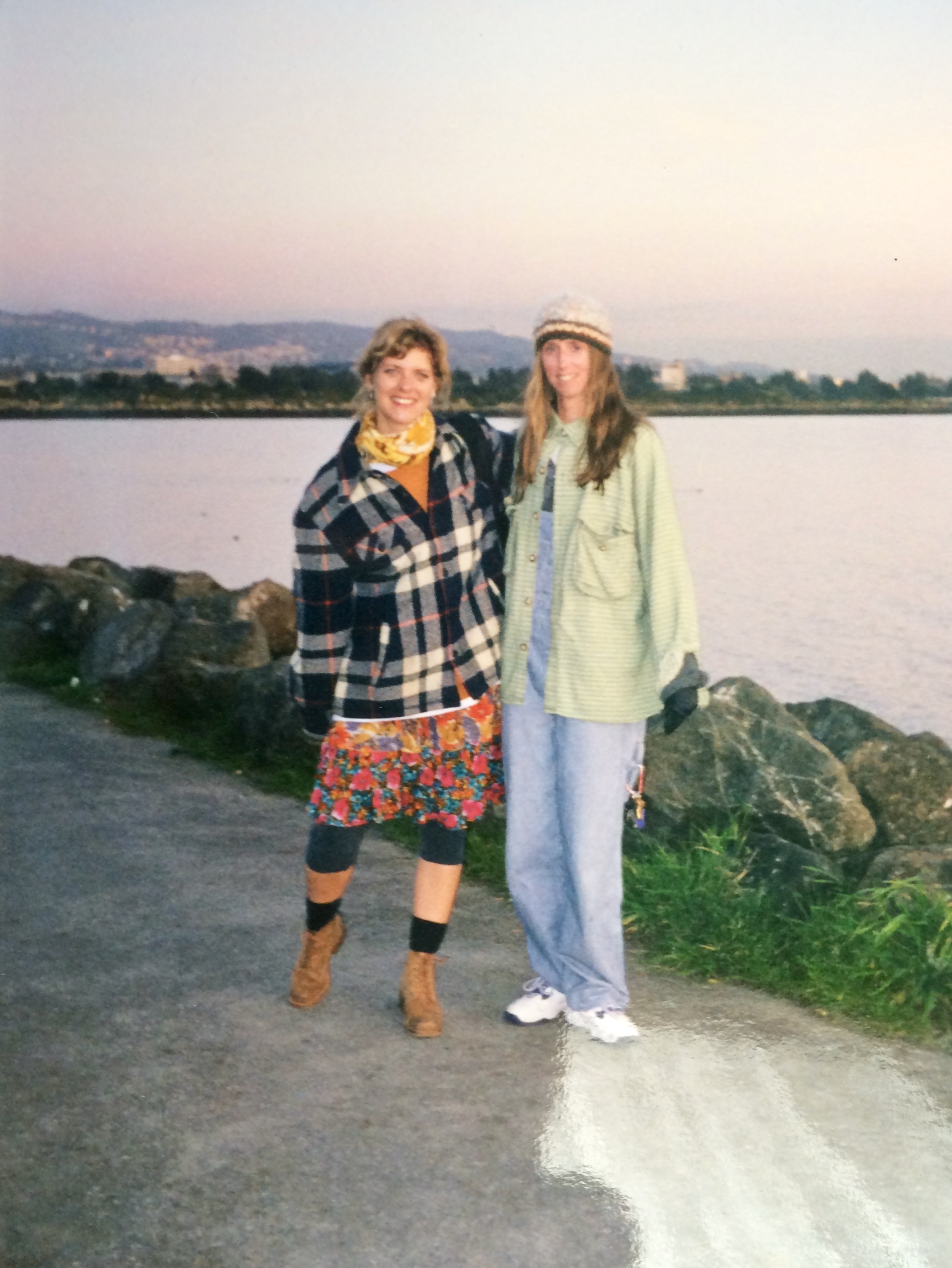Mary Fran Michaels (r.) and I (l.) at Berkeley Marina, Labor Day, 1997.
Introduction to Street Novenas
by Carrie Rehak
“Over time, life’s day-to-day challenges and multiple novena-walks have resulted in a somewhat constant state of praying-in-stride, the old ‘pray without ceasing’ mode … ‘there but by the grace of God go I’ … the only way I’ll survive and thrive, that’s for sure.” — Mary Frances Michaels
A Street Novena, like a street dance, is a form of prayer that takes place outside of a traditional setting or at least without overly formal constraints. Street Novenas need not take place in a street but can happen in any interior or exterior space conducive to the purpose. Like a street dance or street art, Street Novenas are unsanctioned and part of the vernacular culture of the time and place from which they emerge, and with some identifiable features but with room for improvisation.
This practice grew organically in Berkeley between friends — that is, Mary Fran Michaels and I — both of us artists, both of us Catholic, who, while studying theology in graduate school (and in years following, the present day included) found ourselves and others in need of extraordinary help, be it for healing from a medical crisis, sunshine for an outdoor wedding, or hope for a national election. In fact, it was our mutual recognition of being in a world reliant on something greater than ourselves, which happened independent of one another in our early twenties — she, on the south-side of Chicago, and I, in a suburb twenty miles north of Hollywood — that largely landed us in theology school in the first place. (“What brought you here?” “A breakdown.” “What about you?” “A breakdown.”)
Mary Fran and I call them Groovy Novenas. Despite the playfulness of the name, they are for us far from tongue-in-cheek or satiric, but innovative and somewhat offbeat nine-day devotions with serious intentions and sacred roots. Not always but most often our novenas involve walking, either with each other or apart. When we both lived in Berkeley, we often walked together to the Campanile, the stately bell-and-clock tower that overlooks U.C. Berkeley’s campus, like a spindle around which the symphony, as well as the cacophony, of the city seems to revolve. From this site, we could look out over the rooftops and treetops to the bay, and, on days clear of fog, glimpse the Golden Gate.
With our intention offered up in prayer to the one entrusted, we would walk in silence for the half-mile or so up to the Campanile from our meeting place at Center and Oxford streets, and share our reflections with one another as we made our way back down the hill. While I can say with conviction that our every novena produced some benefit, not always matching but exceeding what we had asked for, the point is not to attempt to harness that which is surprising, often recalcitrant, disruptive, unruly, and free, but to act as a leaven. Or, rather, to be leaven, to be in leaven, and for it to be in us.
Despite the possible imperfections of our intentions or our ways of expressing them, there is no mistaking that, during such novenas, we are “all in,” as is God. Quoting medieval mystic Meister Eckhart, “The eye with which I look at God is the same eye with which God looks at me.” The novena creates such a portal, that sacred “eye.”
There is really no difference between what Mary Fran and I call Groovy Novenas and what I am referring to here as Street Novenas. While such DIY Devotions as these allow for boundless imagination and inspiration, as well as expressions of local color, the elements are deeply rooted and consist of these time-honored components:
& An intention or intentions.
& A saint, canonized or not, to entrust the need.
& Nine days, in solitude or with others (in-person or remotely), with start and end dates.
& A practice.
Materials, such as candles, photos, and other creative expressions, are optional and endless (for example, the interweaving of video and seed-bombs into this fall’s DIY Devotion). What is most important is that we find ourselves belonging to something larger than ourselves, an ever-evolving and adaptable tradition, a spacious community. Mystery. Love. The Really Real.
For more information on traditional novenas, see Novena Basics.

